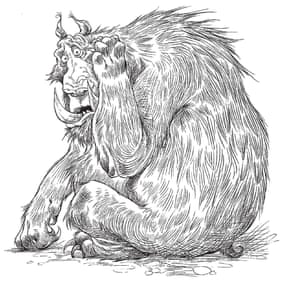We had the privilege to look around the gallery and attend workshops by Chris Mould, Teresa Flavin, and Kate Pankhurst.
Chris Mould

Looking Around The Gallery
After the entertaining and enjoyable talk from Chris, we set off to explore the many fascinating sculptures in the gallery. As well as the abstract bronze, marble, wood, and stone sculptures by the great Barbara Hepworth, there were abstract works by other notable artists, including Mona Hatoum and Cerith Wyn Evans. Here are some that I particularly liked.
 |
| Pierced form by Barbara Hepworth. A bronze sculpture with wire strings. |
 |
| Involute II by Barbara Hepworth. Bronze sculpture. |
 |
| Hot Spot by Mona Hatoum. Wire globe with neon tubing representing the edges of the continents. |
 |
| Turbulence by Mona Hatoum. Made from thousands of black marbles! |
These pieces of art are fascinating to me- the colours, textures, shapes, and patterns all combine to make very visually pleasing artworks.
Teresa Flavin
Having explored the gallery, we walked downstairs into a small side room to attend a workshop by Teresa Flavin, children's book illustrator and author of The Blackhope Enigma. She taught us how to create a small book by folding paper and encouraged us to make up a story with illustrations. I decided to make one about one of my pet guinea pigs, Frosty.




We then made a badge. Yet again, I used Frosty as my subject.
I enjoyed this workshop, though I didn't really learn any new techniques from it.

I enjoyed this workshop, though I didn't really learn any new techniques from it.

Kate Pankhurst
Finally, we attended a talk and workshop from Kate Pankhurst, writer and illustrator of The Mariella Mystery series and Fantastically Great Women Who Changed The World. She spoke about the powerful women that she describes in Fantastically Great Women Who Changed The World, and demonstrated how she draws the characters. Finally, she encouraged us to try drawing a suffragette in her art style.











